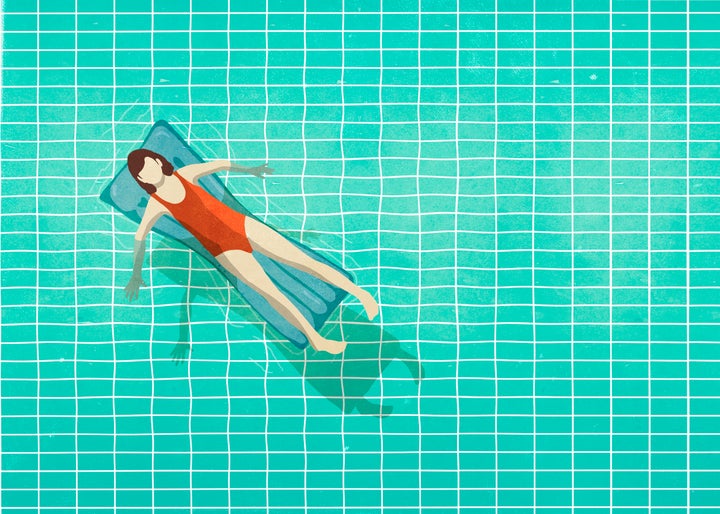Living in a country that’s constantly shrouded in cloud, you might be forgiven for thinking skin cancer won’t affect you – but it’s one of the most common types of cancer in the UK.
There are two main types of skin cancer: melanoma – which is less common but more serious, as it can spread to other organs in the body – and non-melanoma, the more common type of skin cancer.
Melanoma starts in cells in the skin called melanocyte, while non-melanoma refers to a group of cancers that slowly develop in the upper layers of the skin.
With non-melanoma, the most common type is basal cell carcinoma (BCC), which makes up more than 80% of all skin cancers in the UK. It can usually be cured successfully – especially if detected quickly, says Lisa Bickerstaffe, a British Skin Foundation (BSF) spokesperson.
“This is why it’s important to seek advice from your doctor or dermatologist if you notice anything unusual about a mole or patch of skin,” she adds.
So what should you be looking out for?

Symptoms of melanoma
Melanoma is considered the more dangerous form of skin cancer, killing more than 2,000 people in the UK every year. It is the fifth most common cancer in the UK and the second most common in people aged 25 to 49.
It can appear anywhere on the body but, according to the BSF, is most commonly found on men’s backs and women’s legs.
Melanoma can develop from existing moles, but in 70% of cases appears as new marks on the skin. Experts recommend doing a skin check once a month. “If you have any moles or patches of skin that grow, change shape, develop new colours, become inflamed, bleed, crust, turn red around the edges, become itchy or behave unusually in any way, consult your doctor,” says Bickerstaffe. “If in doubt, get it checked sooner rather than later.”
It’s helpful to remember the ABCD rule when doing a skin check on your moles.
Asymmetry: the two halves of the area differ in shape.
Border: the edges of the area may be irregular or blurred, and sometimes show notches.
Colour: this may be uneven. Different shades of black, brown and pink may be seen.
Diameter: most melanomas are at least 6mm in diameter.
Symptoms of non-melanoma
Non-melanoma usually develops on areas of skin regularly exposed to the sun such as the face, ears, hands, shoulders, upper chest and back. The first sign is a lump or discoloured patch on the skin, which slowly progresses over months, sometimes years.
In most cases, cancerous lumps are red and firm and sometimes turn into ulcers, while cancerous patches are usually flat and scaly, according to NHS Choices.
There are other symptoms to be aware of, too. These include: a scab or sore that doesn’t heal; a scaly or crusty patch of skin that is red or inflamed; a flesh coloured bump that won’t go away and grows in size; or a volcano-like growth with a rim and a central crater. If you notice any of these, you should see your GP straight away – as these can all be signs of skin cancer.
Diagnosis
If you’re worried about a mole or scab on your body, seek medical advice from your GP or dermatologist as soon as possible. They will then refer you to a consultant dermatologist on the NHS, if they are concerned by what they see.
The specialist might take a biopsy (sample) of the area impacted to test for skin cancer under a microscope. In most cases, the mole/area will be removed and closely examined to see whether it’s cancerous or not.
Prevention
The BSF urges people to check their skin regularly so that it’s easy to detect any changes. “Enlist the help of family or friends for hard-to-see areas of the body or use a full length mirror,” says Bickerstaffe.
The best way to protect your skin from UV rays – both at home and abroad – is to wear SPF30 sunscreen with 4/5 UVA stars when outside, she says. And don’t forget to put cream on your eyelids too.
“Remember to team this with protective clothing, a wide brimmed hat and sunglasses,” Bickerstaffe continues. “Seek shade, especially between the hours of 11am-3pm and always keep babies and children out of direct sunlight.”